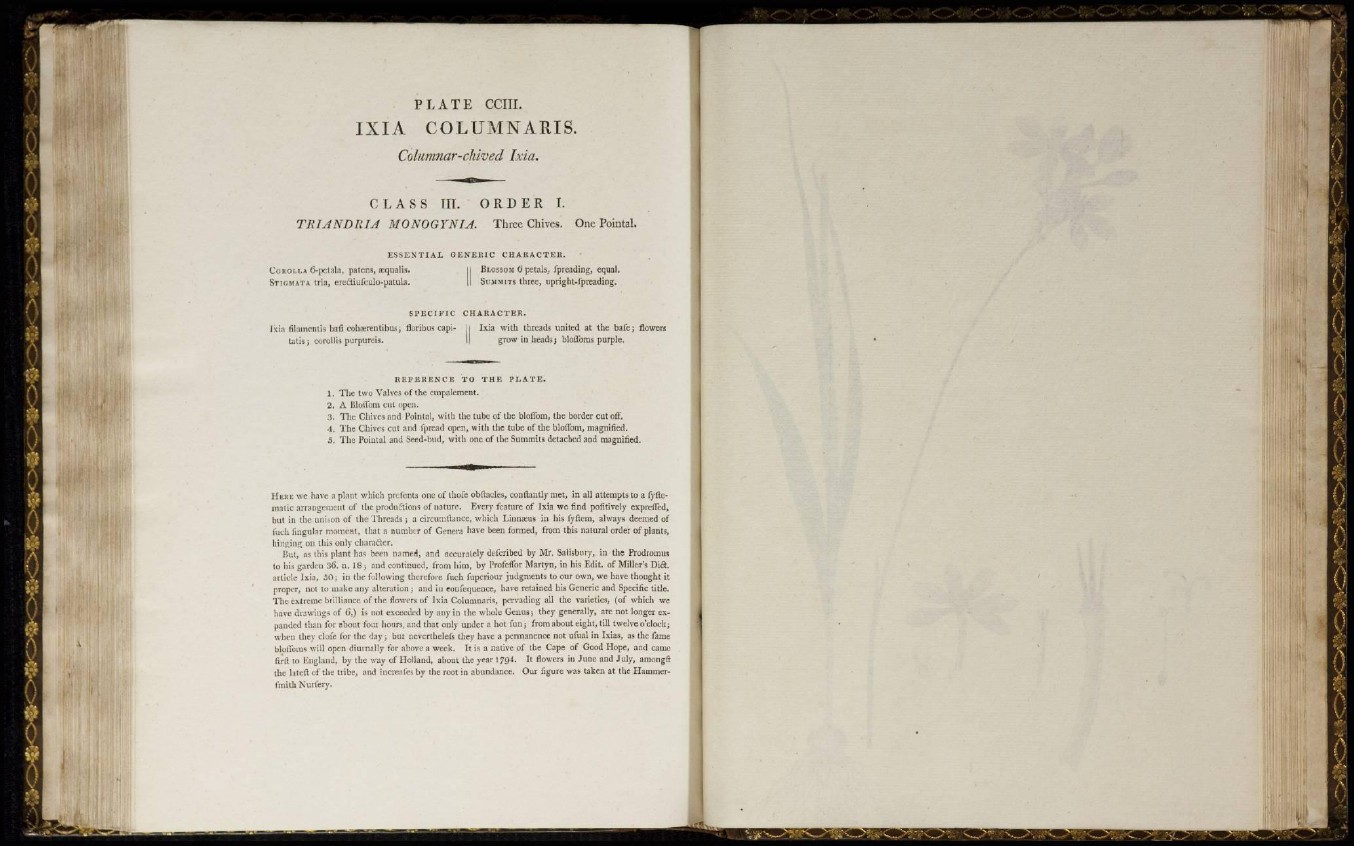
P L A T E CCIII.
I X I A C O L U M N A R I S.
Columnar-chived Ixia.
C L A S S TIL ORDER I.
T R I A N D R I A MONOGYNIA. Three Chives. One Pointal.
E S S E N T I A L G E N E R I C CHARACTER.
C O R O L L A 6-petala, patens, aequalis. II BLOSSOM 6'petals., fpteading, equal.
S T I G M A T A tria, ere&iufculo-patula. II SUMMITS three, upright-fpreading.
S P E C I F I C CHARACTER.
Ixia filament is bafi colinerentibus; floribus capi- h Ixia with threads united at the bafe; flowers
talis j corollis purpuréis. 1| grow in h e a d s ; bloflbms purple.
REFERENCE TO THE PLATE.
1. The two Valves of the empalement.
2. A Bloflbm cut open.
3. The Chives and Pointal, with the tube of the bloflbm, the border cut off'.
•1. T h e Chives cut and fpread open, with the tube of the bloflbm, magnified.
5. The Pointal and Seed-bud, w i t h one of the Summits detached and magnified.
H E R E we have a plant which prtfents one of lliofe obflades, conftantly met, in all attempts to a fyftemalic
arrangement of the productions of nature. Every feature of Ixia we find pofitivcly exprefled,
but in the nniaoa of the Threads ; a circumfiance, which Linnasus in his fyftem, always deemed of
fuch lingular moment, that a number of Genera have been formed, from this natural order of plants,
hinging on this only character.
But, as this plant has been named, and accurately dtferibed by Mr. Salisbury, in the Prodromus
t o his garden 30'. n . 1 8 ; and continued, from him, by Profeflbr Martyn, in his Edit, of Miller's Diet,
a r t i c l e Ixia, 5 0 ; in the following therefore fuch fupcriour j u d g m e n t s to our own, we have thought it
proper, not to make any alteration ; and in eonfequence, have retained his Generic and Specific title.
T h e extreme brilliance of the flowers of Ixia Columnaiis, pervading all the varieties, (of which we
have drawings of 6,) is not exceeded by any in t h e whole G e n u s ; they generally, are not longer expanded
than for about four hours, and that only under a hot fun; from about eight, till twelve o'clock;
when they clofe for t h e d a y ; but neverthelefs they have a permanence not ufual in Ixias, as the fame
bloflbms will open d i u t n a l ' v for above a week. It is a native of the Cape of Good Hope, and came
firft to England, by the way of Holland, about the year 1794. It flowers in J u n e and J u l y , amongfl
the lateft of the t r i b e , and incieafes by the root in abundance. Our figure was taken at the Hammerfmith
Xurfery.